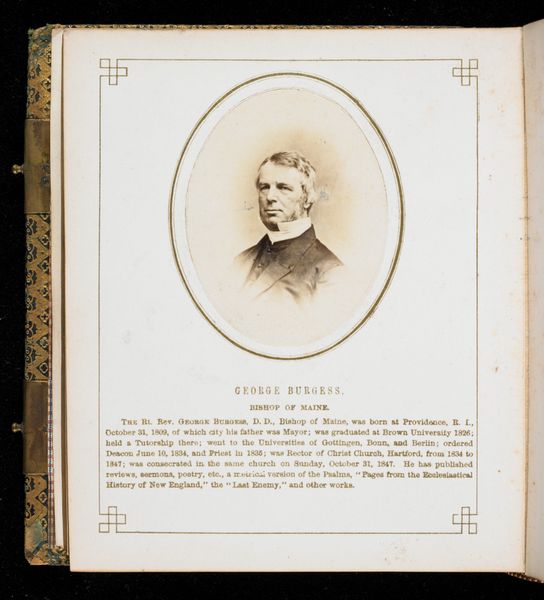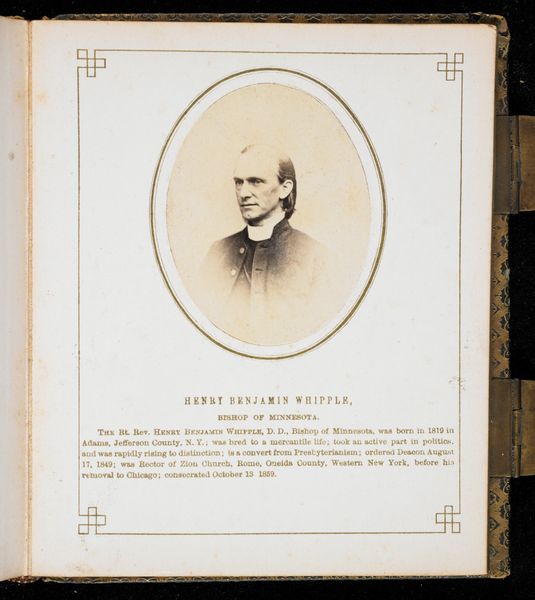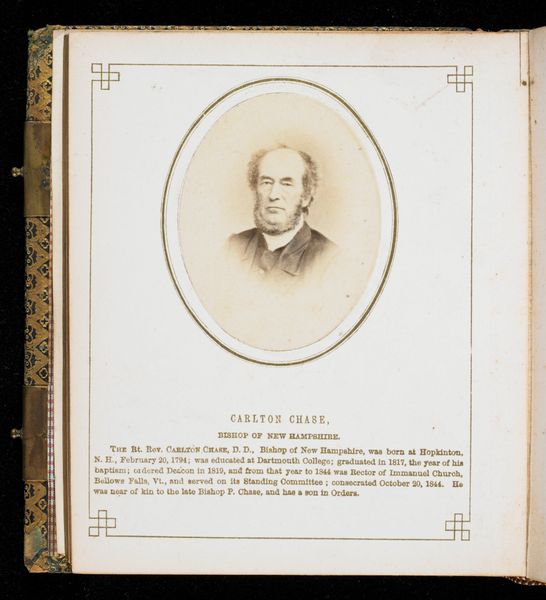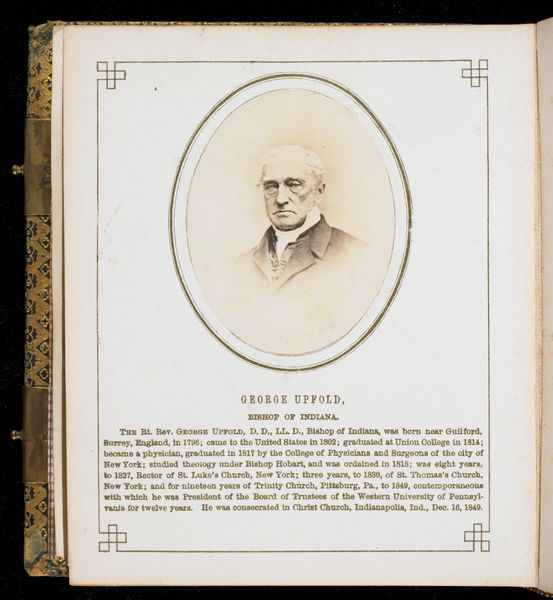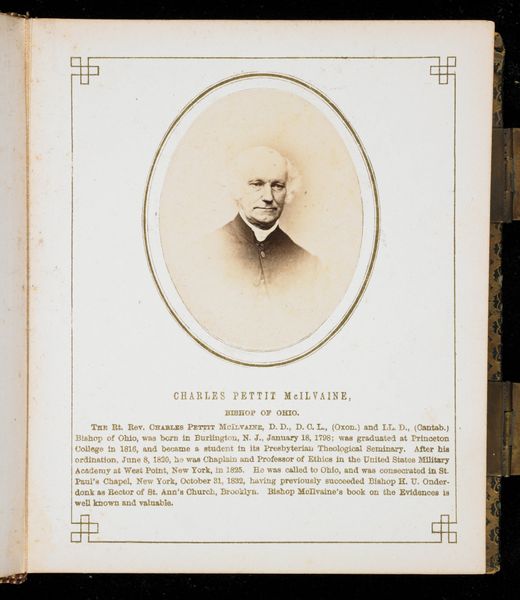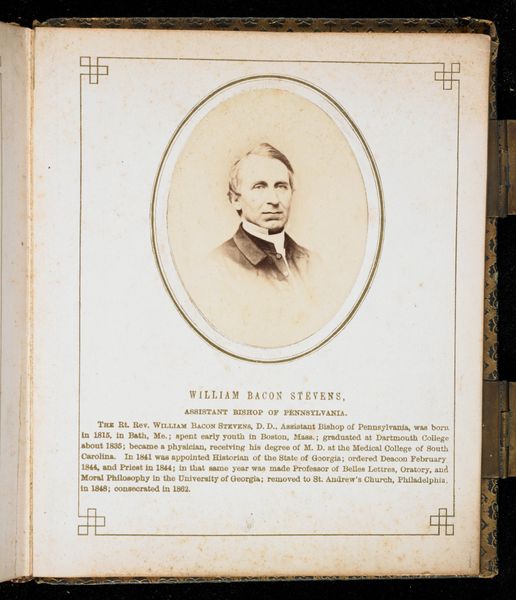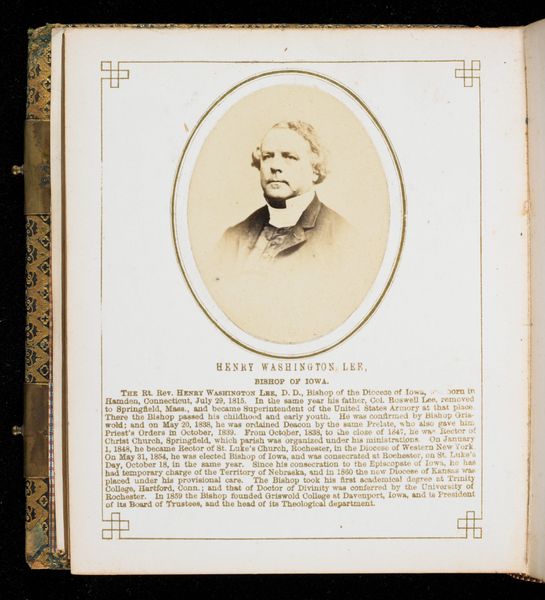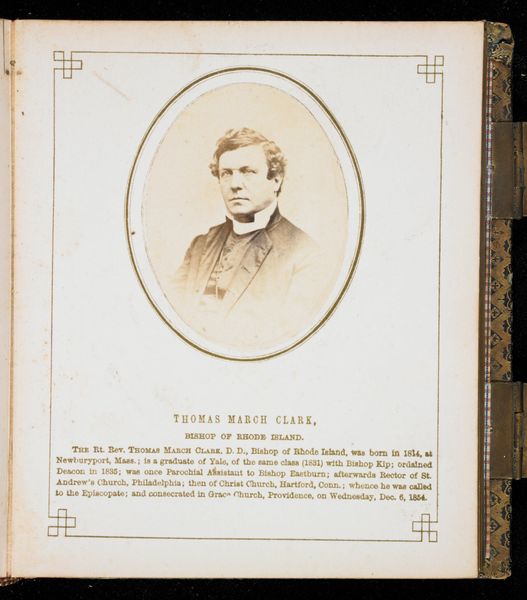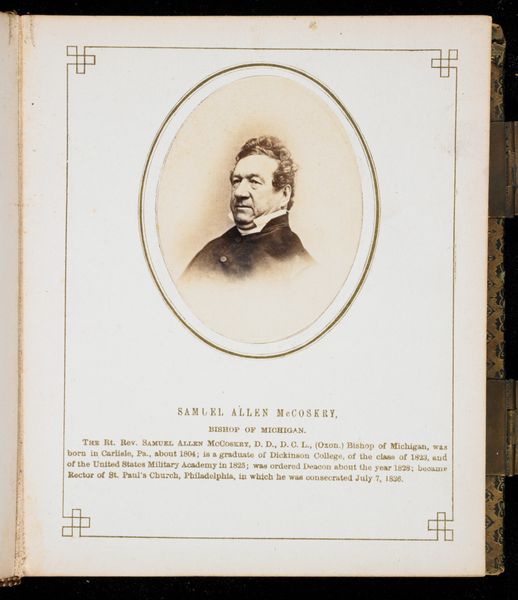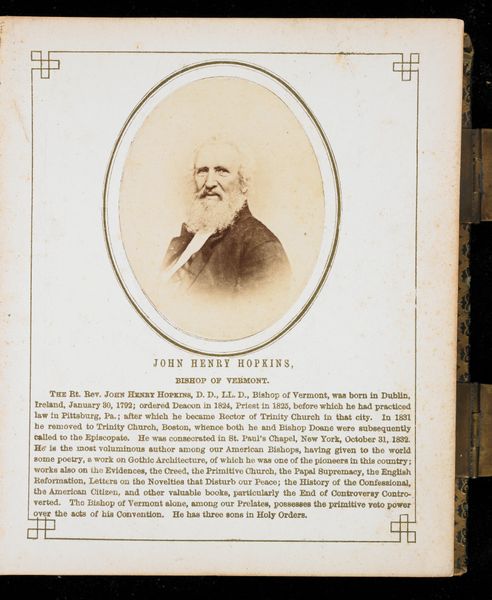
albumen-print, daguerreotype, photography, albumen-print
#
albumen-print
#
portrait
#
16_19th-century
#
daguerreotype
#
photography
#
united-states
#
albumen-print
#
realism
Dimensions: 2 3/4 x 2 1/8 in. (6.99 x 5.4 cm) (image)5 3/4 x 4 3/4 in. (14.61 x 12.07 cm) (mount)
Copyright: Public Domain
Curator: This is an albumen print of Horatio Potter, Bishop of New York. Jeremiah Gurney created this portrait in 1862. It's part of a bound album now residing here at the Minneapolis Institute of Art. Editor: Immediately, I’m struck by its delicate and fading quality. The sepia tones, that oval frame… it lends a sense of timeless formality. And what an intense gaze. Curator: Gurney was a prominent photographer, very successful in New York City. He was known for these formal portraits, catering to the elite. What you’re sensing as formality was also very much a marker of social standing. Consider that photography was gaining ground, allowing access to wider audiences than painted portraiture, while still holding value. Editor: True, the context is vital. Potter was a powerful figure, head of the Episcopal Diocese. Seeing him presented this way raises questions about the power dynamics at play, doesn't it? The church’s role in a society grappling with industrialization and, of course, the Civil War. He would be seen as upholding traditional structures during upheaval. Curator: Precisely. The very act of commissioning such a portrait and presenting himself this way was part of constructing that image. Note also the detail given to his face versus the simple cleric’s coat – conveying moral and intellectual authority. Editor: And I wonder, looking at this, about the people who *didn't* have access to such representation. What perspectives are lost when only those in power can shape their visual narrative? Curator: Absolutely. Think of the enslaved people, the working class – those voices deliberately excluded from visual culture. This single image reminds us of that historical imbalance. These formal portraits acted like social gatekeepers. Editor: Looking at it with fresh eyes, I now see this photo as so much more than just a portrait. It is a statement on power, exclusion, and representation during a very specific, and fraught, moment in history. Curator: I concur, considering the societal implications of these images and reflecting on what the existence and preservation of pieces like this represent offers significant learning potential.
Comments
No comments
Be the first to comment and join the conversation on the ultimate creative platform.
